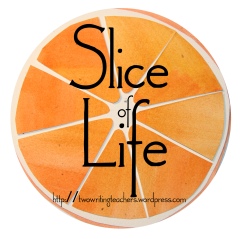I’ve been thinking a lot about writing rubrics lately. All year, we’ve been continuing to incorporate the CCSS into our writing instruction and part of this work has been creating new rubrics. My school purchased the Units of Study by Lucy Calkins and her colleagues at the Teachers College Reading and Writing Project last spring, and we’ve made some minor changes to the rubrics in those units for grades K-5. However, the middle school rubrics have been a bit more of a challenge. Connecticut is part of the Smarter Balanced Assessment Consortium, and they have published rubrics that we’ve used as a guide to create documents that work for us. We found the Smarter Balanced documents cumbersome, so we’ve used the language from Smarter Balanced with the Units of Study format to draft rubrics for grades 6-8.
There has been some disagreement among the teachers, however, about how many categories were needed on the rubric. Ultimately, we felt that everything on the SBAC rubric should be included on ours, but there is concern that the document has become unwieldy.
The challenge is to create a document that includes the standards being taught and assessed, but isn’t so lengthy that teachers don’t use it as a formative assessment tool to determine what our students are learning. As Clare Landrigan and Tammy Mulligan, authors of Assessment in Perspective, have pointed out on their blog, “Assessment, formal and informal, is the window into knowing our students.” Using the information gathered through these assessments to guide instruction is essential if our students are going to grow as writers.
One option is to use the whole rubric for pre- and post-assessments. Then, once learning needs are identified, relevant sections of the rubric can be used as an interim assessment tool to monitor the students’ progress toward their learning goals. Some teachers have found that this works for them; others are not yet convinced.
I know many of you have grappled with this same issue. I’d love to hear if anyone has any other solutions.
Thank you to Stacey, Tara, Dana, Betsy, Anna, and Beth for hosting the Slice of Life Challenge. Be sure to visit Two Writing Teachers to read more Slice of Life posts.



Hi Catherine! We are also thinking about rubrics and playing with options. As the teachers become more familiar with the CCSS types of writing, they are requesting rubrics for the three different types. I’m wondering about this, and debating it in my head. In some ways, I agree and in others, I don’t–may have to blog about this…I like the SBAC rubrics, although I wish that they weren’t banded.
LikeLike
For many years, I have used the 6 traits rubric to assess writing. It takes a LONG time to use it and so many people take short cuts (assessing only 1-2 traits). I have the same love / hate relationship with the SBAC rubric. I’d love to know how to make it work for ongoing assessment (without tears for teachers!).
LikeLike
Hi Catherine,
Reading your post made me think about the “old” 6-trait scoring, where we assessed one trait at a time. I like the idea of using the rubric for pre and post benchmarks, and assessing for traits in between. This can lighten the load for teachers and give students a focus for their writing with very specific feedback.
Students could also self-assess and peer-review, concentrating on the traits. Example: On Monday, we will work with writing partners and read for “word choice” only. …
Have you read Rethinking Rubrics? http://www.amazon.com/Rethinking-Rubrics-Writing-Assessment-Wilson/dp/0325008566
This was eye-opening for me, in that it pokes (some rather big) holes in how we score with rubrics. Sometimes a great piece just doesn’t fit into those neat categories.
Thanks!
Darla
LikeLike
You raise some important questions. Sadly, the answers are hidden in all the cumbersomeness of the multitude of assessments that seem to be what CCSS is all about. I am struggling with fitting in instruction between all the assessments we have to give. And we haven’t even started PARCC yet! A well designed rubric would be most helpful – and it would make sense!
LikeLike
Since we don’t do any of this, Catherine, I can’t help you at all. Each student is so different in their needs that we find using an overall expectation/rubric doesn’t fit. Our words, ‘it depends’ serves us most of the time, depends on the child’s needs for growth in any area. Goals are then set for each. I enjoyed hearing your explanation of the dilemmas.
LikeLike
Before I retired, we (the Language Arts Department) met and looked at the PSSA rubric and the Six Traits rubric. We then came up with our own based on these two using language that was understandable to other content area teachers since we shared with them as well. This helped with grading writing across the curriculum.
LikeLike
I wish we were all in Linda’s position – so much better for teaching and learning! I’ve put together three rubrics (of the kind Melanie is debating) but find that they are quite imperfect – for the reasons Clare and Tammy blog about. So – no solutions, but even more questions!
LikeLike
I am glad I ran across your slice. we have a writing meeting next week. We also have the Units of Study from Calkins and trying to decide best practices for scoring. Thanks for making my slicing time productive in a professional way as well.
LikeLike
Hmm, I am beginning to wonder if you work in my district. Our teachers are doing the same work. The MS is trying to come up with consistent rubrics across disciplines. There has been a significant amount of discussion regarding how to proceed.
It’s nice to see another CT teacher as a “Slicer”
LikeLike